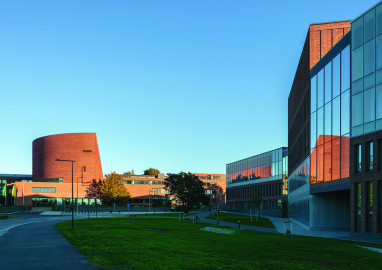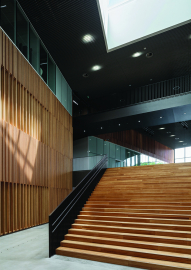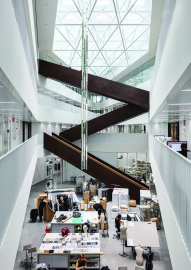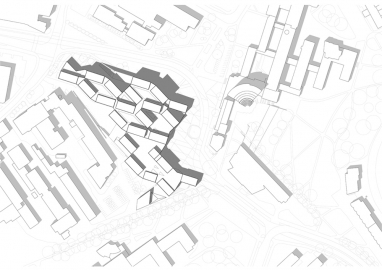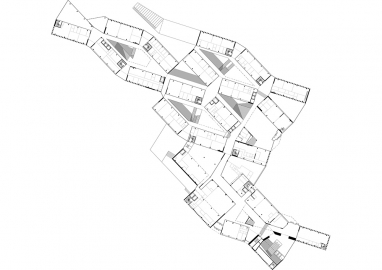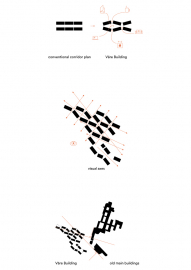Aalto University Väre Building
Väre brings together the Aalto University schools of design and business as well as retail spaces linked to a new underground line. Creating an entirely new central square on the Otaniemi campus known for its iconic modernist architecture, it serves as a place of casual encounters and provides a series of spaces for interdisciplinary interaction.
Responding to the needs of the present day, Väre forms a new central hub on the Aalto University Otaniemi campus in Espoo, Finland. Väre adapts the classic courtyard university typology to contemporary ways of learning and pedagogy, and brings together an unusual mix of functions. It houses the Aalto University School of Arts, Architecture and Design, and the School of Business, and also includes retail spaces and is integrated to a new underground station. The complex hosts 1,850 students and 350 employees.
The spatial layout based on a lattice of simple project space units supports interaction and flexible use. The carefully planned spatial sequence unfolds with rooms arranged around sky-lit lobbies that open views to all the floors and the stairs connecting them. Transparent walls reveal the creative action in the project spaces and the ground floor lobby is open to the public.
Väre introduces a significant new dynamic to the campus: it plays a key role both in the transformation of the Aalto University that is merging the schools of business, arts and design, and technical sciences into one university, and in the densification and diversification of the Otaniemi campus in Espoo as a part of the growing metropolitan region around Helsinki. The original masterplan for the carefully landscaped campus was created by Aino and Alvar Aalto in 1948. Placing itself in a dialogue with two iconic buildings designed by Alvar and Elissa Aalto, the old main building from 1964 and the main campus library from 1969, Väre forms a new central square that brings together the entrances to the university buildings, the new underground line, and the retail spaces in the adjoining shopping centre.
The layout and massing breaks the large volume of Väre into a cluster of smaller units helping it adapt to the context and scale of the park-like campus. The two principal facade alignments are derived from the old main buildings. The use of hand-laid red brick follows Aalto’s masterful treatment of the material while the use of glass gives the complex a contemporary expression.
The facades of the Väre Building are hand-laid red brick and patterned glass, and complement the existing campus architecture in a contemporary way. The polished asphalt concrete floor of the square continues the polished concrete floors in the building. Inside, wood surfaces on the walls and the central stair highlight the flow of the spatial sequence through the building. Surface materials in the main study areas form a neutral background for the work of the designers in the building; only the sculptural, self-supporting patinated steel stairs crossing the lobbies in the study areas stand out. The building has a concrete element frame.
The Väre Building is environmentally friendly, energy-efficient and water-saving. It is integrated to the existing urban fabric and to the new underground station and built on an earlier parking lot. 200 bicycle parking places and changing rooms encourage cycling. Ground-source heat pump covers 90% of the heat consumption and roof-top solar panels around 6% of the electricity consumption. Ventilation is demand-controlled and has heat recovery. Lighting is controlled, too. 75% of the construction waste was recycled.

